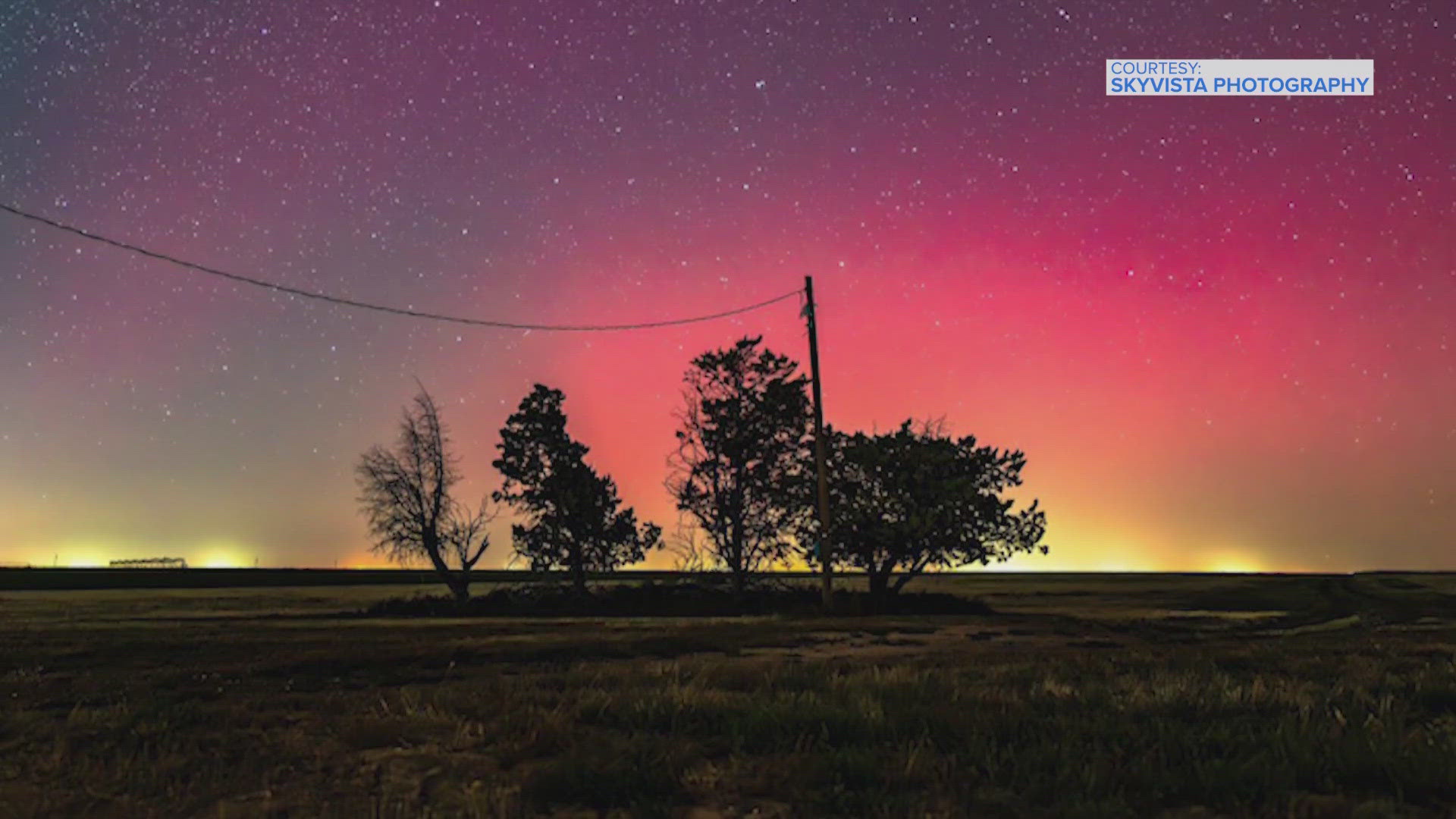HOUSTON — As we get closer to the peak of our sun's 11-year solar cycle, solar flares, sun spots, prominences and coronal mass ejections become more likely.
It's these coronal mass ejections (CME) that are famous for causing the Aurora Borealis to erupt in the sky across our northern latitudes.
Just a few days ago, on Oct. 8, our sun produced one of those CMEs -- a big one! This severe solar storm sent a cloud of plasma and charged particles racing directly toward our Earth. NOAA defines this one as a G4-level storm. That's only one level away from the most severe level of G5.
The storm will arrive tonight, Oct. 10, and last through the first part of the weekend. It's the kind of geomagnetic storm that can do damage to communication satellites, GPS devices and other electronic infrastructure but also produce a tremendous display of the Northern Lights.
Because of the strength of the storm, skywatchers will be able to see the show across a wider swath of the Northern Hemisphere than usual. That means people as far south as Texas should be able to witness the glow of the Northern Lights.
The Northern Lights were visible in the northeast on Thursday night in places they're usually not able to be seen.
Will we be able to see them in the Houston area? Well, probably not. Forecasters say you'll have to go to North Texas for the closest chance of catching the show. But folks as far south as Dallas to Wichita Falls to Amarillo have a real shot at seeing the Aurora for the next few nights through Saturday.
Now, I personally witnessed the Northern Lights on a camping trip near San Marcos back in 1990. It appeared as a faint red glow in the northern night sky. Nothing spectacular, but it was there. Just knowing I was seeing the Northern Lights in Central Texas was amazing enough!
So, if you can get far, far away from the city lights of the Greater Houston area, stay up late and keep an eye on the north. Skies will be very clear, the stars will be out, and you never know when Mother Nature will throw a surprise our way!

